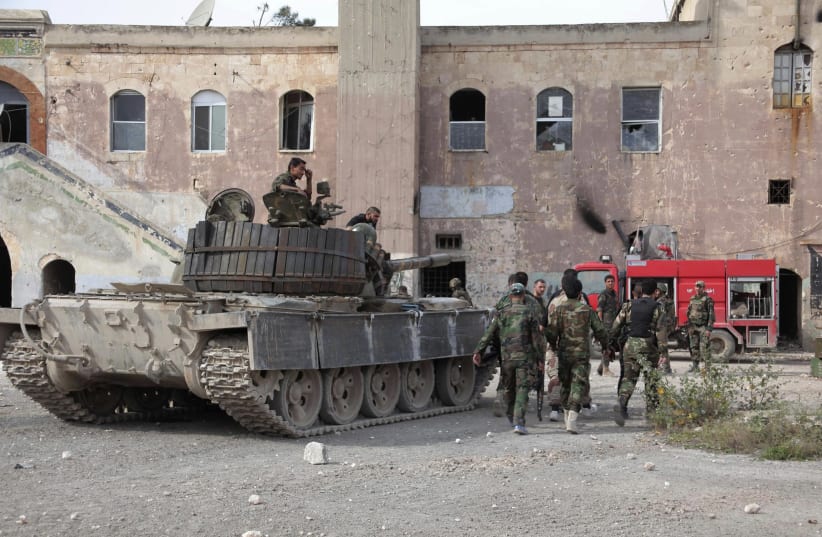The coalition used artillery and air strikes to break the enemy’s line of advance. After the attack, the coalition “conducted strikes against attacking forces to repel the act of aggression.” But they stressed it was all in self-defense and that pro-regime vehicles which turned around were not targeted.A coalition official told Reuters that the attacking forces were “likely seeking to seize oil fields in Khsham that had been a major source of revenue for Daesh [ISIS] from 2014-2017.”According to Liveuamap, a site that maps the conflict in Syria, the town of Khusham near Deir al-Zor is actually held by the Assad regime, while the nearby Conoco-Tabiya gas plant is several kilometers from the line that separates the SDF from the regime.That would indicate that the attack came from the area of Khusham. In September 2017, the SDF liberated the gas fields. Since then, there have been rumors that the regime and its Russian backers would like to find a way to return the fields to the hands of Damascus. Before Turkey’s Afrin operation in January, Kurdish sources said they had been pressured to hand over the gas field in exchange for the regime preventing a Turkish offensive against the People’s Protection Units (YPG) in Afrin. The YPG is one of many groups that makes up the SDF.The coalition has stressed in statements and tweets that it “communicated through deconfliction line with Russians before, during and after attack.”CNN has postulated – based on a US official’s comments – that the US was “looking into whether Russian contractors operating in the vicinity might have been involved.”In addition, they said the US has “not ruled out that Iranian- backed forces might have been involved in the attack.”In October two Russian contractors were murdered by ISIS. There are thought to be hundreds of Russian contractors serving with pro-regime forces.The attack on the SDF by pro-regime forces marks an unprecedented escalation in eastern Syria between the regime and the coalition. The coalition has warned over the past year against any attacks on its SDF partners. In June 2017, the US shot down a Syrian jet after clashes near Tabqah. The coalition says this time it was defending its partner forces, but the alleged death toll among the pro-regime forces will certainly send a message that Washington is serious about sticking with its partners.In October two Russian contractors were murdered by ISIS. There are thought to be hundreds of Russian contractors serving with pro-regime forces.The attack on the SDF by pro-regime forces marks an unprecedented escalation in eastern Syria between the regime and the coalition. The coalition has warned over the past year against any attacks on its SDF partners. In June 2017, the US shot down a Syrian jet after clashes near Tabqah. The coalition says this time it was defending its partner forces, but the alleged death toll among the pro-regime forces will certainly send a message that Washington is serious about sticking with its partners.
U.S.: More than 100 pro-Syrian forces killed after thwarted attack
Questions surround unprecedented battle between coalition and pro-regime forces included tanks, artillery and rockets near an gas field in Syria.
